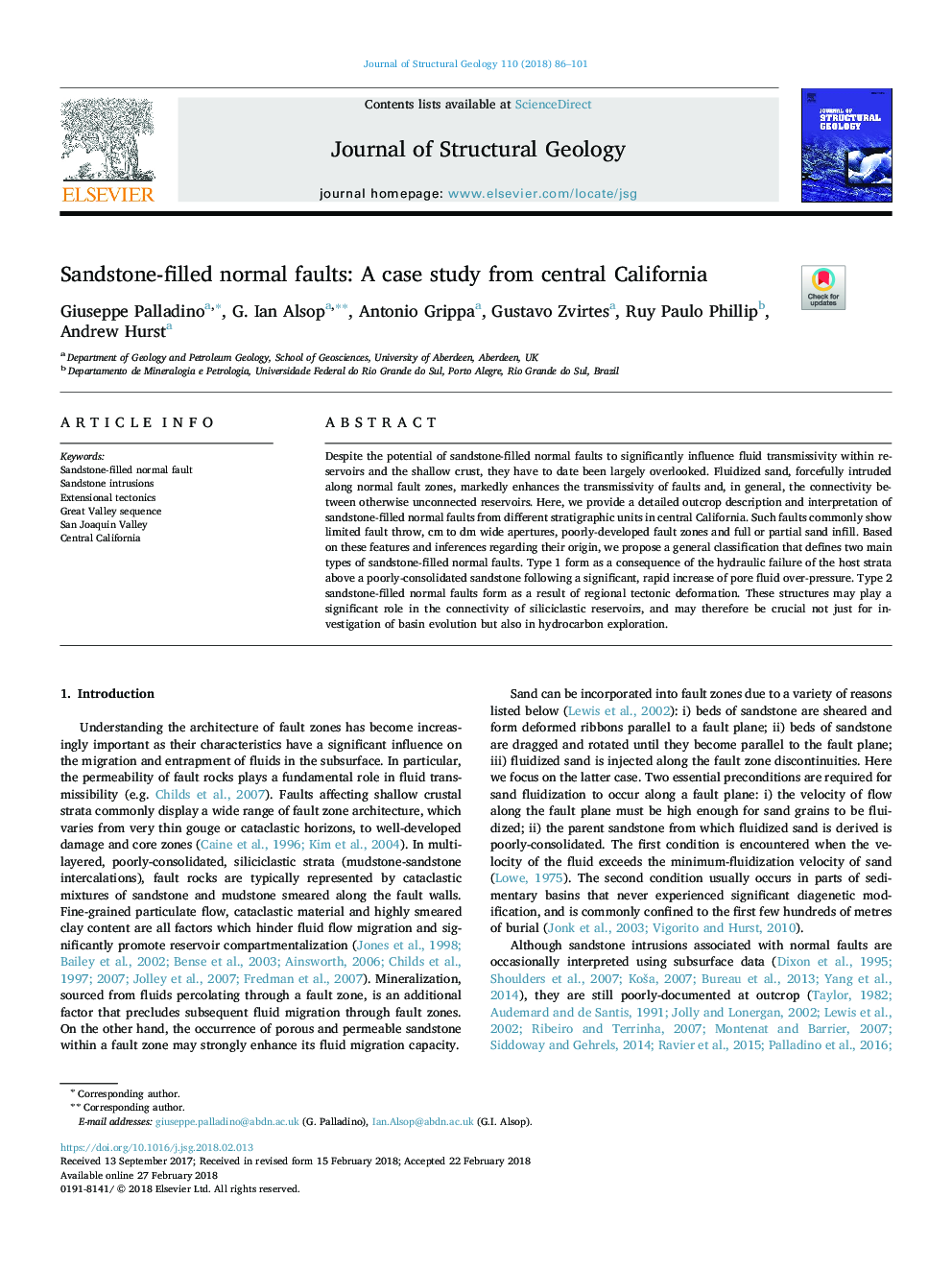| Article ID | Journal | Published Year | Pages | File Type |
|---|---|---|---|---|
| 8914432 | Journal of Structural Geology | 2018 | 16 Pages |
Abstract
Despite the potential of sandstone-filled normal faults to significantly influence fluid transmissivity within reservoirs and the shallow crust, they have to date been largely overlooked. Fluidized sand, forcefully intruded along normal fault zones, markedly enhances the transmissivity of faults and, in general, the connectivity between otherwise unconnected reservoirs. Here, we provide a detailed outcrop description and interpretation of sandstone-filled normal faults from different stratigraphic units in central California. Such faults commonly show limited fault throw, cm to dm wide apertures, poorly-developed fault zones and full or partial sand infill. Based on these features and inferences regarding their origin, we propose a general classification that defines two main types of sandstone-filled normal faults. Type 1 form as a consequence of the hydraulic failure of the host strata above a poorly-consolidated sandstone following a significant, rapid increase of pore fluid over-pressure. Type 2 sandstone-filled normal faults form as a result of regional tectonic deformation. These structures may play a significant role in the connectivity of siliciclastic reservoirs, and may therefore be crucial not just for investigation of basin evolution but also in hydrocarbon exploration.
Keywords
Related Topics
Physical Sciences and Engineering
Earth and Planetary Sciences
Geology
Authors
Giuseppe Palladino, G. Ian Alsop, Antonio Grippa, Gustavo Zvirtes, Ruy Paulo Phillip, Andrew Hurst,
